If you’re wondering how to get tomato plants to grow fast, you’re not alone. One of the most common frustrations gardeners face is watching their newly planted tomato plants just sit there.
After all the work of getting them in the ground, the last thing you want is for them to stall out. But with the right care and a few tips, you can get those plants to take off quickly and start growing strong.
Getting young tomato plants to grow fast is more than just a matter of watering them and hoping for the best. It’s about helping them recover from transplant shock, feeding them the right nutrients at the right time, giving them the protection they need, in addition to watering them properly.
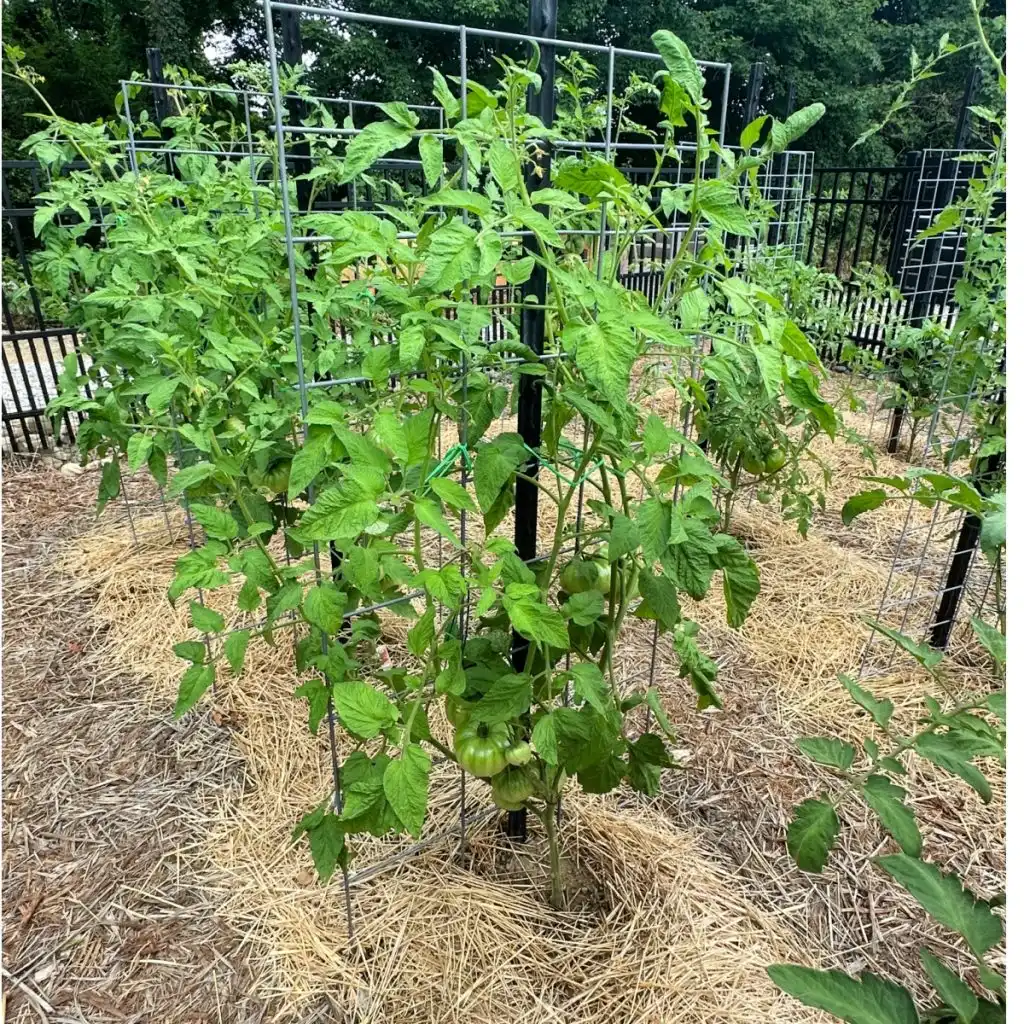
Strong early growth leads to more blooms, more fruit, and an overall healthier plant throughout the growing season.
Here’s a look at a few easy but effective things you can do to jumpstart your tomato plants and get them growing fast from the very beginning.
4 Tips To Get Tomato Plants To Grow Fast
1. Give Your Tomato Plants A Fertilizer Boost
Tomato plants need a lot of energy to grow – especially in the early stages when they’re getting used to their new home in the garden. Even if your soil is rich and fertile, a small dose of fertilizer can make a big difference in helping plants bounce back from transplant shock and get growing.
The best way to give tomato plants an early boost is with a liquid fertilizer. Liquid fertilizers work quickly because they’re absorbed through the roots and the leaves. Options like compost tea, worm casting tea, or a commercial liquid tomato fertilizer all work well.
Look for a fertilizer that has higher levels of potassium and phosphorus. These nutrients help promote root growth and flowering, which are critical in the early stages of plant development. Nitrogen is still important, but too much nitrogen early on can lead to big leafy plants with little fruit.
Before applying any fertilizer, wait about a week after transplanting. Let your tomato plants settle into the soil first. Fertilizing too soon can cause more stress instead of helping.
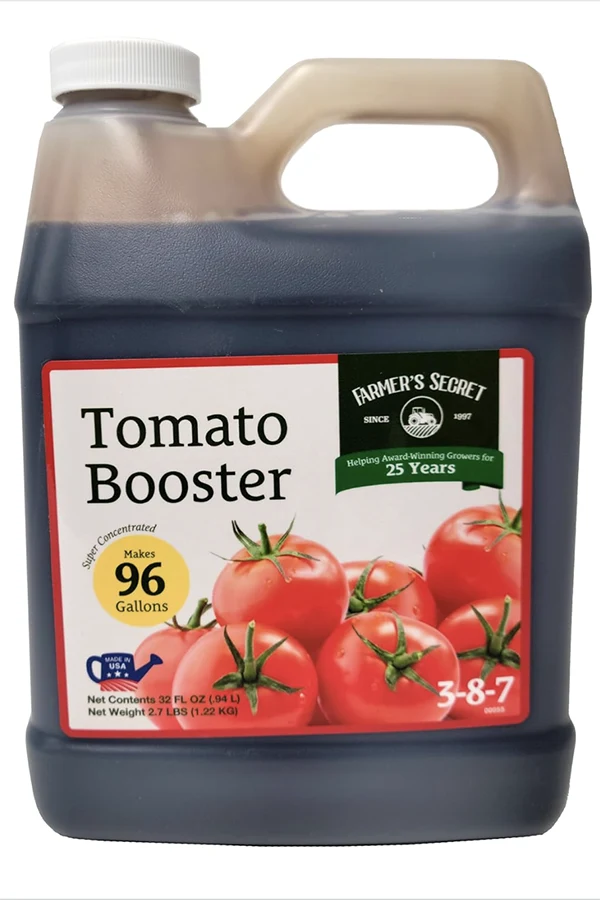
How To Apply Fertilizer To Young Tomato Plants
- If using compost or worm casting tea, give each plant about 1/4 gallon.
- For commercial liquid fertilizer, dilute it to half strength and also apply 1/4 gallon per plant. (See Affiliate Product: Tomato Booster).
You can repeat this every seven days for the first four weeks after planting. This will give your tomato plants just the right amount of extra energy to establish deep roots and start growing strong. After that, switch to fertilizing every two weeks with the same light mix.
2. Mulch With Power To Protect And Feed
A lot of gardeners skip mulching when they first plant tomatoes, but that’s a mistake if you want fast growth. Mulch doesn’t just keep the weeds down – it helps regulate soil temperature, retains moisture, and adds nutrients when done right.
The problem with leaving soil bare is that it dries out faster, allowing weeds to take hold and compete for nutrients. Plus, unprotected soil can fluctuate in temperature quickly – hot during the day and cool at night. Those swings make it hard for tomato plants to grow steadily.
Here’s how to mulch your plants for maximum benefit:
- Start with coffee grounds – Sprinkle about 1/2 to 3/4 of a cup of used coffee grounds around each plant. Coffee grounds add a slow-release nitrogen source and help improve soil structure.
- Add worm castings – Next, spread another 1/2 to 1 cup of worm castings. These are packed with beneficial microbes and nutrients that slowly feed your plants.
- Top with organic mulch – Finish with a thick layer (4 to 6 inches) of straw, shredded leaves, or grass clippings. This insulates the soil, prevents weeds, and helps retain moisture.
Every time it rains or you water your plants, those nutrients in the coffee grounds and worm castings will soak into the soil and feed your tomato plants naturally.
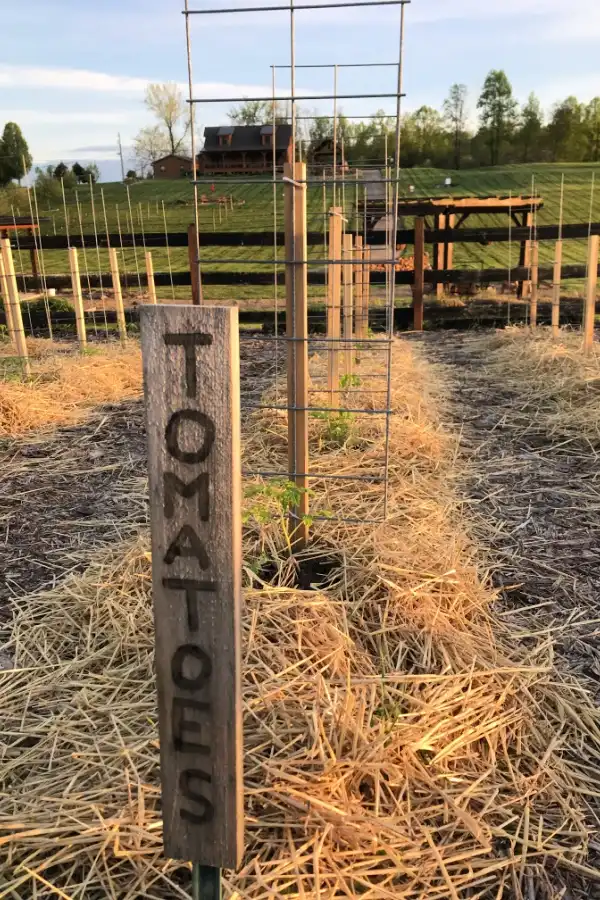
3. Watering the Right Way Makes All the Difference
Believe it or not, the most common reason young tomato plants struggle isn’t underwatering – it’s actually overwatering. When the soil stays too wet, especially around the roots, it causes major problems.
Soggy soil leads to swollen roots that can’t pull in nutrients. When that happens, the tomato plants stop growing, leaves turn yellow, and it may even start to wilt. This often causes gardeners to panic and water even more, making the situation worse.
To avoid this, only water your tomato plants when they truly need it. Here’s how to make sure you’re doing it right:
- Check soil moisture first – Stick your finger a few inches into the soil, or use a soil moisture meter. Just because the surface looks dry doesn’t mean the soil underneath is.
- Water deeply, not often – Once the plants have been in the ground for a few days and start settling in, switch to deeper, less frequent watering. This encourages the roots to grow down instead of staying near the surface.
- Let the soil dry slightly between watering – Tomato roots don’t like to sit in soggy soil. Giving them time to dry out a bit between watering helps them stay healthy and active.
During the first few days after transplanting, you’ll likely need to water every day or two. But after that, only water when the top few inches of soil have dried out.
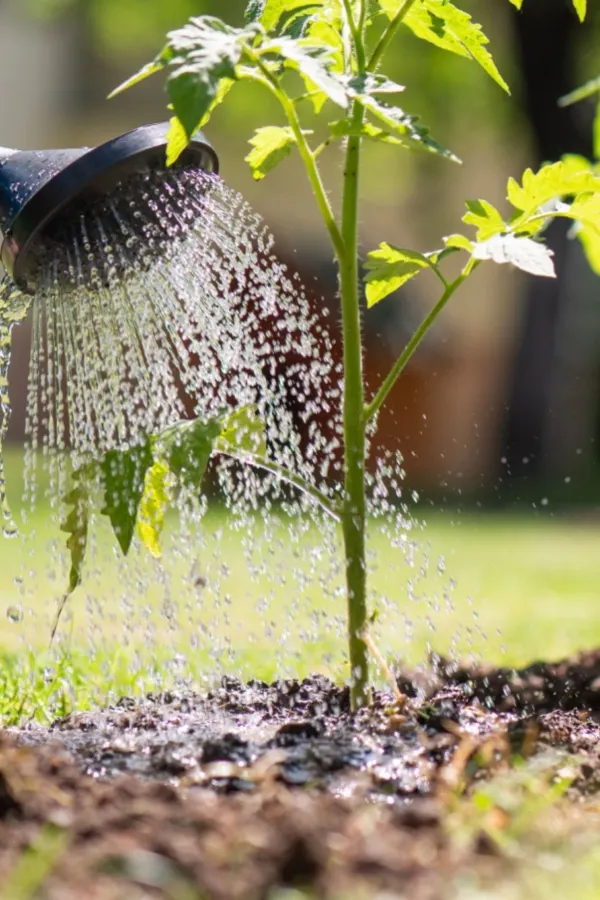
Use A Moisture Meter For Precision
If you’re not sure when to water, a simple soil moisture meter with a probe can take the guesswork out. These tools show you exactly how moist the soil is at the root level. They’re especially useful for tomato plants in containers or hanging baskets too. (See Affiliate Link: Soil Moisture Meter)
4. Start Pruning Early To Encourage Growth
Once your tomato plants are in the ground and beginning to grow, it’s a good idea to start pruning the lower leaves. Keeping the bottom part of the plant clean and free of leaves helps in several ways.
First, it improves airflow around the base of the plant, which helps reduce the risk of fungal diseases. It also lets more light reach the soil and lower stem, both of which are important for healthy growth.
Second, pruning prevents soil-borne diseases like blight from splashing up onto your plants when it rains or when you water. Tomato plants are especially vulnerable to this, and removing those lower leaves can go a long way in keeping them healthy.
Once your plants start growing taller, aim to prune up to the first 12-18 inches of the stem. Always use clean, sharp scissors or pruners to avoid damaging the plant or spreading disease.
See our full related article on How To Prune Young Tomato Plants.
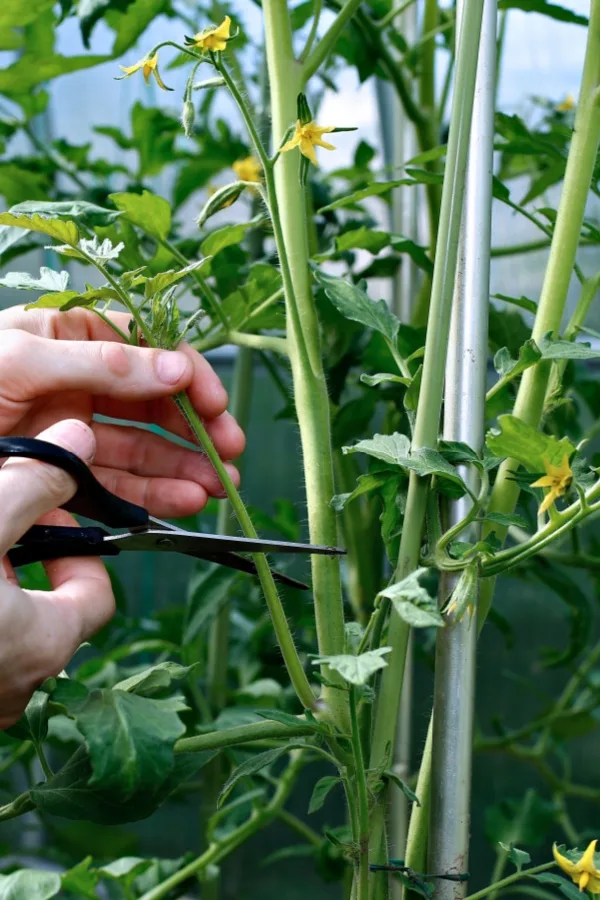
Why Early Growth Matters
Helping your tomato plants grow fast early in the season sets the tone for the rest of the summer. Plants that are strong and healthy in the beginning produce more flowers, more fruit, and are better at fighting off pests and diseases.
Everything from fertilizing at the right time, using mulch the smart way, watering wisely, and pruning early works together to give your plants the best possible start.
And remember – don’t worry if your plants seem slow for the first few days after transplanting. A little transplant shock is normal. But if you follow these steps, you’ll be giving them every advantage they need to bounce back and grow strong.
With the right start, you’ll be on your way to a summer full of fresh, homegrown tomatoes.
Follow Our Facebook Page For Even More Great Tomato Growing Tips! I Grow Tomatoes Facebook Page
I Grow Tomatoes is a website created for those who love all things about tomatoes – from planting and growing – to cooking and canning! We publish two articles every week, 52 weeks a year. Sign up today to follow via email! This article may contain affiliate links.
